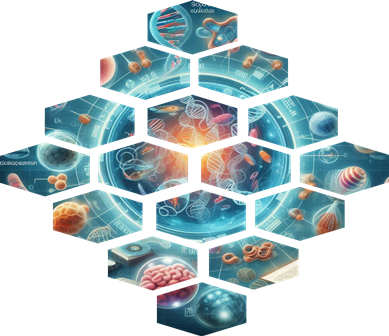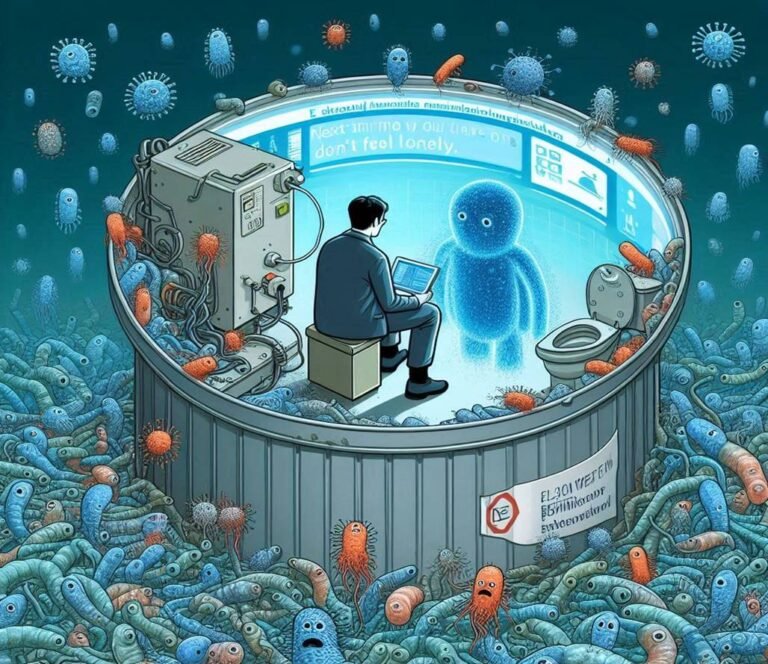In the vast expanse of the climate system, a tiny but mighty force is at work, shaping the planet’s future in ways that are often overlooked. Microbial communities, the diverse assemblies of bacteria, fungi, and other microscopic organisms, are the unsung heroes in the narrative of climate change. These minuscule life forms play a pivotal role in regulating Earth’s climate by influencing biogeochemical cycles, yet their impact is rarely acknowledged in mainstream discussions on climate action.
The intricate dance between microbes and the environment is a testament to the complexity of climate systems. Microbes are involved in processes such as carbon sequestration, methane production, and nitrogen fixation, all of which have significant implications for atmospheric composition and global temperatures. For instance, in the ocean, phytoplankton—microscopic plants—conduct photosynthesis, absorbing carbon dioxide and releasing oxygen, much like their terrestrial plant counterparts. This not only affects carbon levels but also impacts ocean acidification and the broader marine ecosystem.
On land, soil microbes decompose organic matter, releasing carbon dioxide and methane into the atmosphere. However, they also contribute to soil health by breaking down pollutants and enhancing nutrient availability for plants, which in turn sequesters more carbon. The balance of these processes is delicate, and changes in microbial activity due to environmental stressors can tip the scales in favor of increased greenhouse gas emissions.
Microbial communities are integral to Earth’s ecosystems, and their interactions with the climate are profound and multifaceted. Here are some specific examples of how microbial communities affect climate change:
1. Cloud Formation and Precipitation: Certain bacteria and fungi have the ability to initiate precipitation within clouds due to special surface proteins. These microorganisms, such as Pseudomonas syringae, can live and thrive in clouds and airborne water droplets, influencing the global bioprecipitation cycle.
2. Soil Health and Greenhouse Gas Emissions: Soil microbes decompose organic matter, which can release greenhouse gases like carbon dioxide and methane. However, they also contribute to soil health by breaking down pollutants and enhancing nutrient availability for plants, which can lead to increased carbon sequestration.
3. Deep-Sea Microbiomes: Microorganisms in deep-sea environments play crucial roles in global geochemical nutrient cycles. Despite being in a food-limited environment, these microbes produce organic molecules that impact other water layers and contribute to the overall health of global water ecosystems.
4. Impact on Human Health and Ecosystems: Microorganisms that hitchhike on sand particles can be transported to new areas and ecosystems, potentially impacting human health or the local ecosystem. For example, dust from the Sahara Desert has been linked to meningitis outbreaks in the sub-Sahara African region and can affect coral reefs in the Caribbean.
5. Response to Environmental Stressors: Climate change influences microbial communities, altering their composition and function. As temperatures rise, microbial metabolism can accelerate, leading to higher rates of decomposition and greenhouse gas release, creating a feedback loop that exacerbates climate change.
These examples underscore the importance of microbial communities in the climate system and highlight the need for further research to understand and harness their potential in mitigating climate change. By exploring the complex relationships between microbes and the environment, scientists can develop strategies to leverage these tiny but powerful organisms in the fight against global warming.
Climate change itself influences microbial communities, altering their composition and function. As temperatures rise, microbial metabolism can accelerate, leading to higher rates of decomposition and greenhouse gas release. This creates a feedback loop where increased microbial activity exacerbates climate change, which then further alters microbial ecosystems.
Understanding and harnessing the power of microbial communities offers a promising avenue for mitigating climate change. Strategies such as promoting soil health to enhance carbon sequestration, protecting wetlands that house methane-consuming bacteria, and even engineering microbes to more efficiently process greenhouse gases are all areas of active research. These approaches highlight the potential of microorganisms as allies in the fight against climate change.
The narrative of climate change is complex and multifaceted, with microbial communities playing a crucial but often invisible role. By shedding light on these microscopic architects, we can gain a deeper understanding of the climate system and develop more effective strategies for safeguarding our planet’s future. As we continue to unravel the mysteries of microbial influence on climate, we may find that the smallest organisms on Earth hold the keys to addressing one of the biggest challenges facing humanity.






